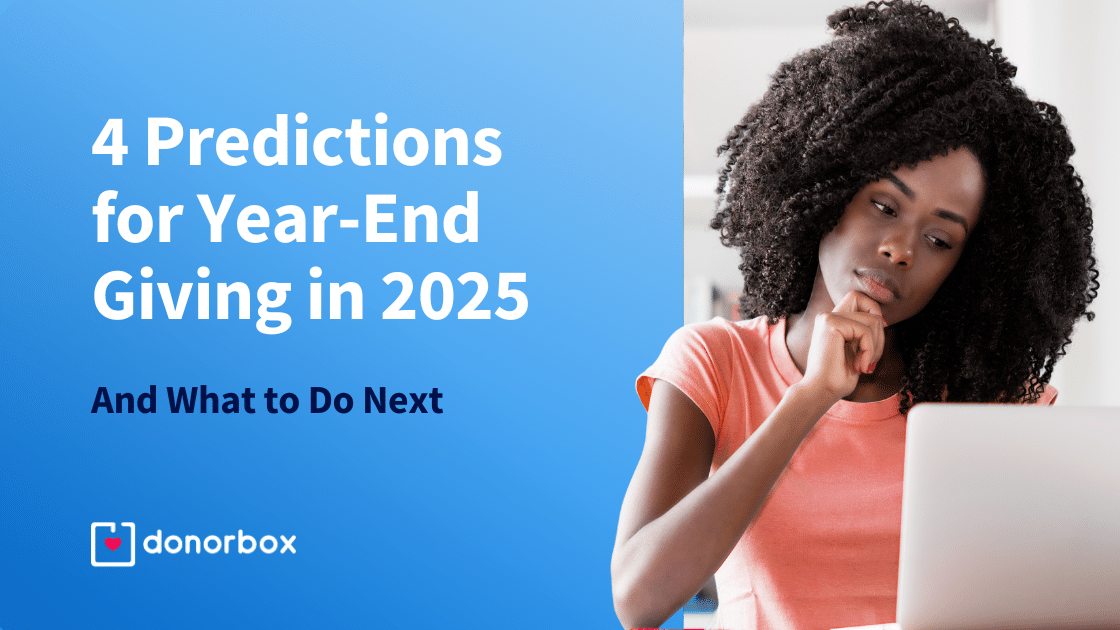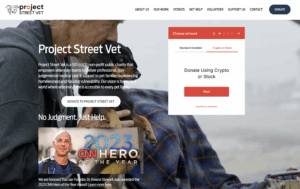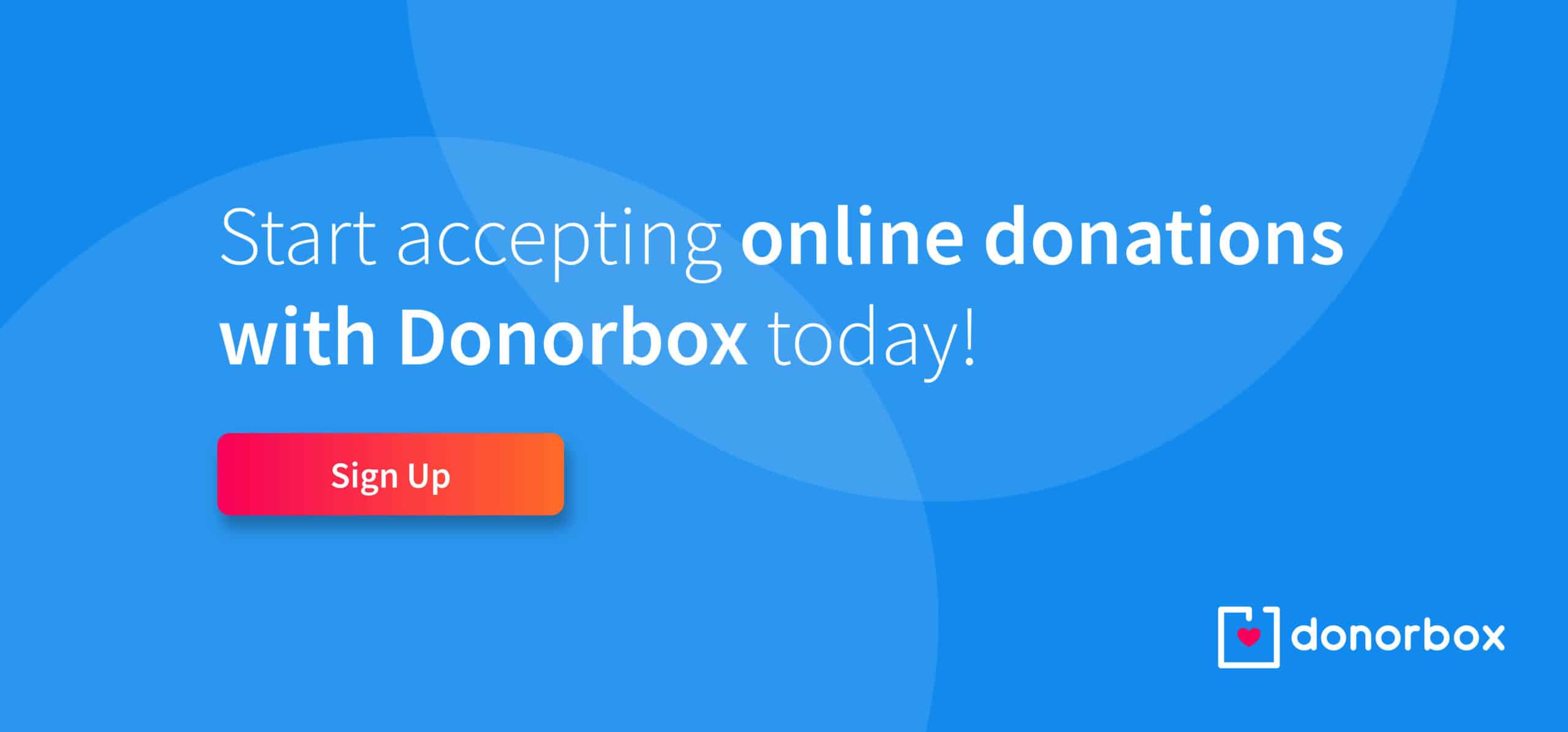4 Predictions for Year-End Giving in 2025 – And What to Do Next
Several factors are shaking up year-end giving this year. Read on to see our four predictions and what you can do to stay ahead of the curve.

Several factors are shaking up year-end giving this year. Read on to see our four predictions and what you can do to stay ahead of the curve.

The One Big Beautiful Bill Act (OBBB), signed into law on July 4th, 2025, is going to shake up charitable giving for years to come. Even though the changes don’t officially kick in until 2026, donors aren’t waiting.
That means if you’re deep in year-end planning for October through December, how you message, segment, and steward your donors now matters more than ever.
Here are my four predictions for year-end giving this year, and what I’d focus on if I were coaching your team right now:

Once the OBBB act goes into effect in 2026, taxpayers taking the standard deduction can deduct $1,000 in charitable giving, and up to $2,000 for married couples filing jointly.
This means that some grassroots donors might wait to give until 2026 for a bigger tax benefit – and that’s totally okay! Don’t panic.
Most donors don’t give because of tax rules; they give because they see real, immediate impact.
Lead with that impact. Show meals being served, programs running, lives being changed this week. Make your emails, social posts, and donation forms speak with urgency and tangible outcomes. Simple, concrete impact statements like, “Your gift today feeds 12 children this week,” work far better than any tax incentive messaging.
If you notice a pattern of standard deduction donors pausing, consider a hyper-targeted microtouch series of emails or posts that highlight immediate outcomes with a strong call to action.
Pair this with human storytelling to show donors what’s at stake if they delay their gift.
On the other side of the coin, the OBBB act may encourage larger donors to give more this year and beat the new limits coming in 2026.
In 2026, itemizers must give over a threshold of 0.5% of their Adjusted Gross Income (or AGI) and under a ceiling of 35% of AGI in order to receive tax benefits.
If a major donor leans in with a larger year-end gift, lean in with them. Thank them personally and promptly.
Show them the real difference their gift makes, and invite them to engage beyond a monetary donation through advisory roles, partner events, or advocacy work.
Now is the perfect time to start connecting with major donors, too. Pull them aside, send them a voice note, or give them a quick call – and share an insider peek they won’t get anywhere else.
It’s those small touches that make them feel like partners, not just check-writers.
With recent market growth and the new giving limits coming in 2026, some donors may choose to give stock instead of cash. They avoid capital gains, and you get the impact – everyone wins.
Make it seamless. Tools like Donorbox’s integration with The Giving Block let donors give stock directly on your form. And don’t stop there … a phone call, handwritten note, or quick coffee can turn a stock donor into a true partner.
Take a look at how Project Street Vet accepts stock donations on their Donorbox-powered form:

Learn More About Collecting Stock Donations
And remember that stock donors aren’t just giving money … they’re thinking long-term. They care about real outcomes, legacy, and sustainability – so make impact front and center: programs running, meals going out, lives changing.
Show them exactly what their gift is doing, and they’ll stick with you.
Recurring giving has been climbing fast – with 1 in 3 donors enrolled in monthly giving – and year-end is the perfect time to embrace it.
A monthly donor gives once, but their gift keeps giving month after month. It counts for 2025 taxes and continues into 2026, giving you predictable revenue and easier planning.
If you have a sizable base of repeat donors, consider making monthly giving the default or recommended option on your donation form. On average, Donorbox forms that have a monthly interval as the recommendation raise 91% more than those without a recommended interval.
And to promote it even further, have a gentle nudge in place like Donorbox’s Recurring Donation Upsell, which converts one-time donors into monthly sustainers.
Don’t forget to tie your donation tiers to real impact to drive giving. And focus on storytelling to show how their current and future support isn’t just addressing immediate needs, but driving real, lasting change.
Donor behavior is constantly changing. Shocker, right?
The year-end giving situation in 2025 is no different. Donors are still thinking about impact, timing, and, yes, taxes.
Some might pause, some might give more, and some might mix up their giving patterns. Your job is to keep up with them and make giving feel urgent, real, and tied to the lives they’re changing.
If you get this right, it’s not just about year-end. You actually start to see what really gets people to move and how to engage with them on a deeper level that lasts way beyond December.
Looking for a partner to help you understand the changing fundraising landscape? Sign up for Donorbox Premium and enjoy your choice of coaching from fundraising experts, dedicated account management, guided onboarding, and more.

Subscribe to our e-newsletter to receive the latest blogs, news, and more in your inbox.

